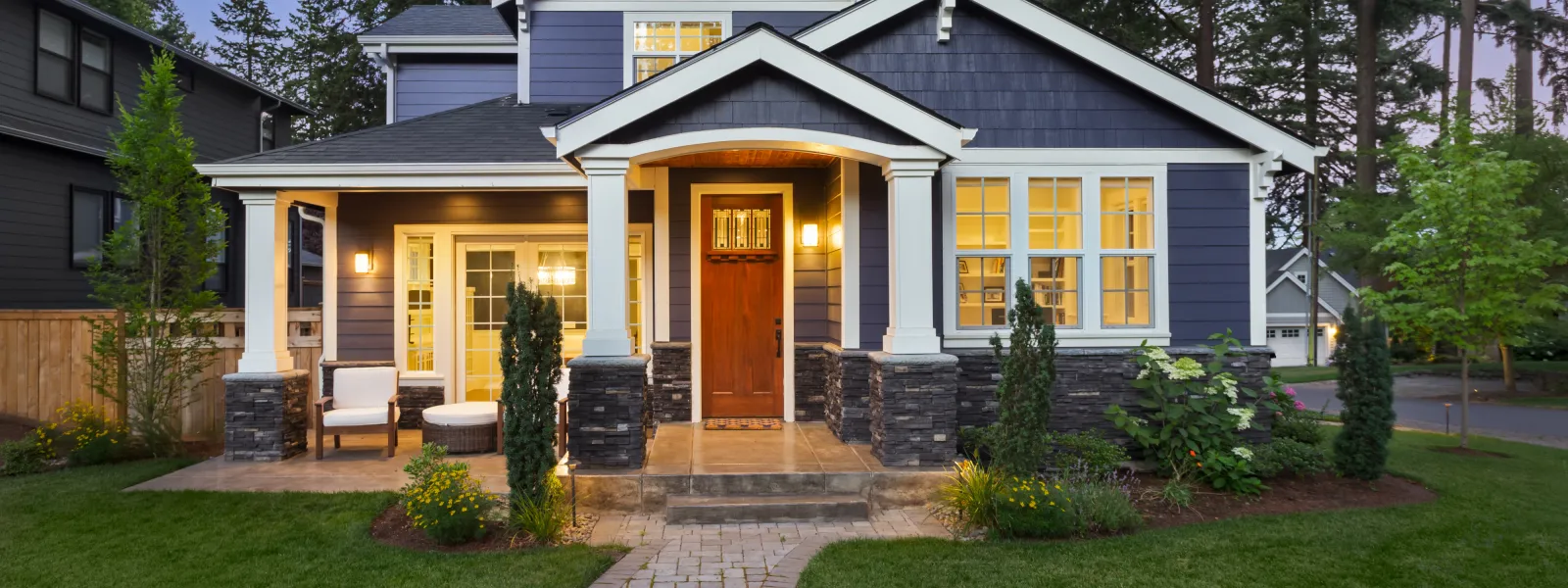5 Tips to Winterize Your Home’s Doors
Posted on March 08, 2022
There's no shortage of ways to reduce electricity use in the home. Purchasing energy-efficient appliances, eliminating "vampire" loads, and even shutting down your computer each night can help. Once October or November rolls around, though, few things conserve energy like winterizing exterior doors and windows. According to the U.S. Department of Energy, up to 30% of energy use can escape through unsealed doors and windows, so sealing those well can make a big difference.
Most people know how to winterize windows. Barring replacing the units themselves, using an insulator kit coupled with thermally lined drapes or cellular shades usually does the trick. The same can be said for capping window wells and installing storm windows. When it comes to winterizing doors, however, DIY solutions can seem limited.
But there are a few things you can do to shore up unusually drafty doors. Here's how to best winterize your home's exterior doors:
1. Install deadbolts.
One of the easiest, quickest, and cheapest door insulation solutions has nothing to do with insulation at all: installing deadbolts on exterior doors. Deadbolts pull doors tightly against their frames, creating a much stronger door gap seal. Drafts become less of an issue, and your home becomes more energy efficient in the process.
2. Install new under-door seals.
Much like a deadbolt, an under-door seal is a quick and inexpensive means to improve door insulation in your home. Also known as door sweeps, the product is simply attached to the bottom of exterior doors to strengthen the physical barrier between the outside and inside of your home.
There are five basic types of under-door seals available: slide-in, snap-in, L-shaped, wrap-around, and nail-on. Typically, you'll find slide- or snap-in under-door seals on steel and fiberglass doors — though there are a few manufacturers that install L-shaped sweeps on their products. Wood doors, on the other hand, often use nail-on or screw-in under door seals. This is why wrap-around sweeps can sometimes be used as an alternative, as they, too, are nailed or screwed into place.
3. Install new door gaskets.
Rubber weatherstripping is probably the most popular of door gaskets used to improve the door-gap seal of exterior doors. This "cut-to-fit" product can be used for any size or shape of door frame and can be easily replaced as needed.
Stop-mounted gaskets, however, can offer even stronger door-gap seals. The aluminum gaskets are generally thicker and heartier, completely sealing door edges to create an almost fully weatherproof door. All that's necessary is mounting the gasket to the door frame. More importantly, stop mounted gaskets are adjustable — unlike rubber weatherstripping. If you feel a draft somewhere along the door, a simple adjustment can often correct the problem.
4. Use caulk and sealants.
Sometimes, it's not the door itself causing the problem but the frame. For older homes with wood doorframes, this is especially true. Check the frame for any cracks or holes, and then fill with caulk or expanding foam sealants. Such products are yet another easy, cost-effective option to strengthen door insulation. Just remember to check any sealed areas again after allowing the caulk or sealant to dry. You may still find a draft and need to reapply to prevent energy escape.
5. Install new doors.
Depending on the age of your exterior doors, even all of the weatherstripping, under-door seals, and foam sealants won't be enough to correct the problem. It may be time to buy and install new doors. You'll want to choose energy-efficient, weatherproof doors with high R-values. R-values rank a door's ability to resist heat flow, which is essential for quality door insulation.
Winterizing exterior doors can be a simple way to reduce your energy consumption. Start with the easiest, most cost-effective options and move forward from there. And if you find that you do need to install new doors entirely, get in touch with the Expo Home Improvement team today.
